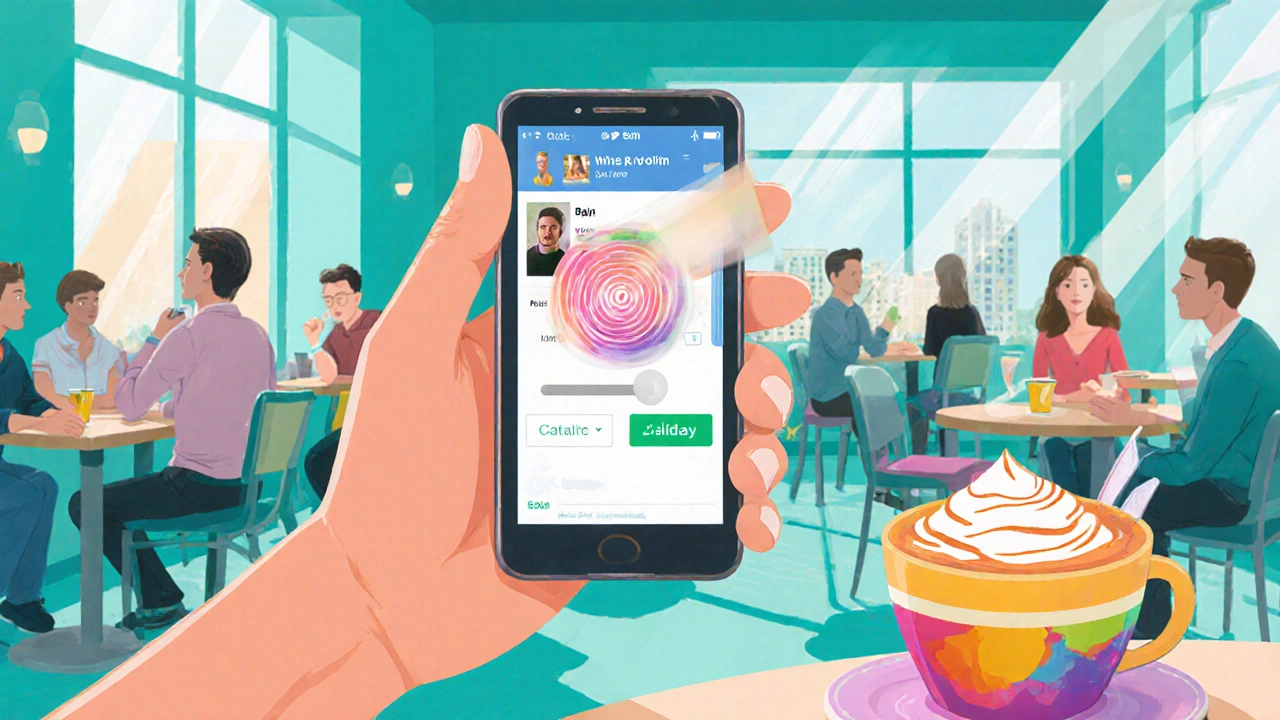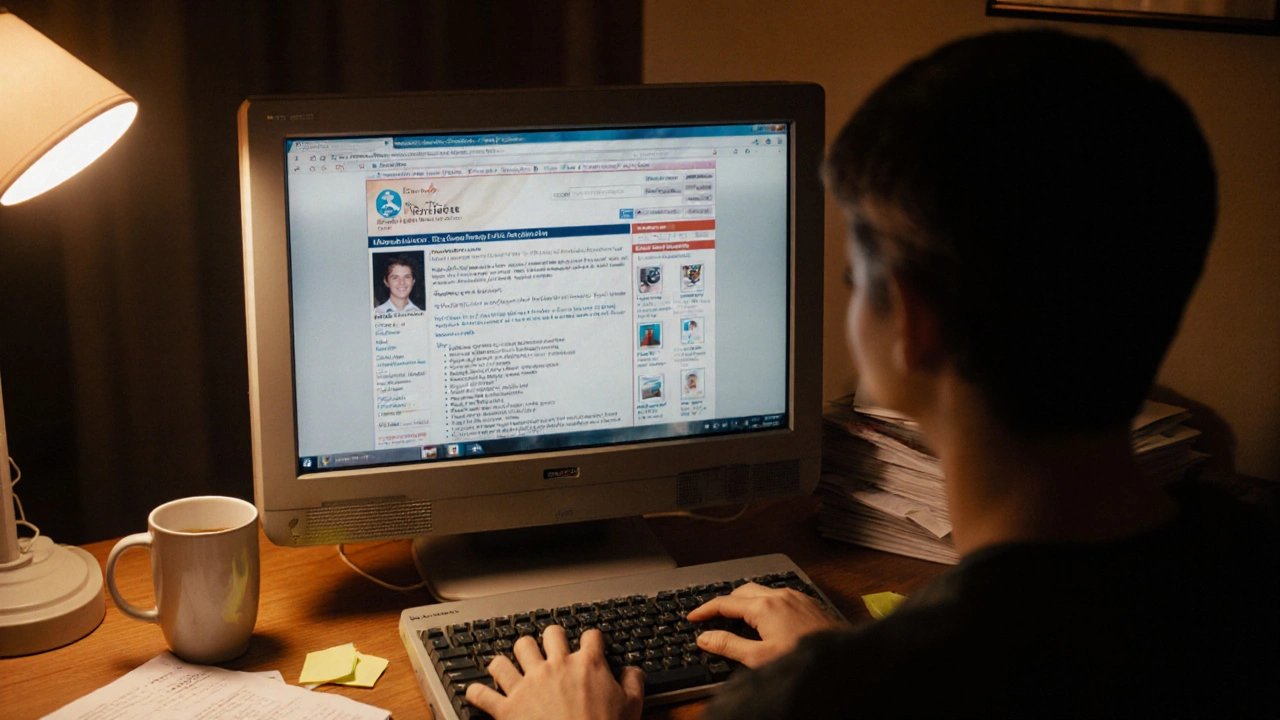Dating App Comparison Tool
Find Your Perfect Dating App
Select your priorities to see which dating apps match your needs best
Your Results
Select your preferences above to see matching apps
When you think about romance today, you probably picture swipes, AI suggestions, and video dates. That whole picture is the result of a rapid online dating transformation that started just over two decades ago. In this article we’ll walk through the major milestones, track how technology reshaped courtship, and point out what’s coming next.
What Online Dating is
Online Dating is the practice of meeting romantic partners through internet platforms and mobile applications. It began as a niche service for busy professionals and has grown into a mainstream cultural force. Understanding its evolution helps you see why certain features feel intuitive and why new trends spark both excitement and anxiety.
Early Days (2000‑2005): The First Wave
The early 2000s brought the first wave of web‑based matchmaking sites. Match.com, launched in 1995, dominated the landscape, offering searchable profiles and email introductions. These sites required long, text‑heavy bios and relied on users manually sifting through thousands of members.
During this period, Dating Apps were still a concept. Most people accessed services via desktop browsers, and the idea of meeting someone on a phone screen seemed futuristic.
Rise of Smartphones (2005‑2012): Swipe Culture Begins
The launch of the iPhone in 2007 and Android shortly after unlocked a new era. Mobile users wanted quick, on‑the‑go ways to connect, leading to the birth of swipe‑based apps.
- Tinder launched in 2012, introducing the now‑iconic left‑right swipe mechanic. Its simple UI lowered the barrier to entry and turned dating into a game‑like experience.
- Bumble entered the market in 2014, flipping the script by letting women make the first move.
- Hinge positioned itself as the “relationship app,” focusing on detailed prompts rather than endless photos.
These apps shifted courtship from lengthy essay‑style profiles to visual, bite‑size decisions. The data collected from swipes fed early recommendation algorithms, setting the stage for more sophisticated matching.
Algorithmic Matching (2012‑2018): Data‑Driven Romance
Once users were generating massive amounts of interaction data, platforms could start fine‑tuning matches.
Algorithms began weighing factors beyond basic demographics: shared interests, mutual friends, and even time‑of‑day activity patterns. This period also saw the rise of “ghosting” - disappearing without explanation - as a side effect of the easy‑out provided by digital communication.
Data‑driven matching brought measurable outcomes. For instance, a 2016 internal study from Match.com reported a 27% increase in successful first‑date rates after integrating predictive analytics.

AI & Video Dating (2018‑2025): The Next Frontier
Artificial intelligence entered the scene with features like “Smart Photos” that automatically select the most engaging image, and “Conversation Starters” that suggest opening lines based on mutual interests.
Video dating exploded during the COVID‑19 pandemic. Platforms added integrated video chat, turning virtual dates into a norm rather than a novelty. By 2023, 42% of U.S. dating app users reported having at least one video date.
- AI matchmaking leverages natural‑language processing to analyze messages and predict compatibility.
- Video dating tools now include virtual backgrounds, real‑time translation, and even AI‑generated ice‑breakers.
These advances blur the line between digital and in‑person interaction, making the early “online‑only” stigma fade away.
Social & Cultural Impact
Online dating reshaped dating norms worldwide. Acceptance rates rose from 45% in 2010 to 78% in 2024, according to a Pew Research study. Millennials and Gen Z now view apps as a primary way to meet partners, while older generations are catching up.
However, new behaviors emerged: “catfishing” (pretending to be someone else), “benching” (keeping someone as a fallback), and the paradox of choice, where too many options lead to decision fatigue.
Safety & Privacy Considerations
As platforms gathered richer personal data, concerns about privacy intensified. Data breaches at several major apps in 2022 sparked a wave of legislative proposals, including the U.S. “Online Dating Privacy Act” that mandates end‑to‑end encryption for messaging.
Most apps now offer verification badges, AI‑driven image authenticity checks, and easy reporting tools. Yet users still need to stay vigilant-never share financial info and always meet in public spaces for the first offline encounter.
Future Trends: What’s Next?
Looking ahead, three trends seem poised to define the next decade:
- Hyper‑personalized AI matchmakers: Systems will create dynamic personality profiles that evolve with user behavior, delivering matches that feel “hand‑picked.”
- Immersive virtual reality dates: VR lounges will let couples share a digital space, from a beach sunset to a rooftop bar, enhancing connection when distance is a barrier.
- Ethical data frameworks: Transparent consent models and decentralized identity solutions (e.g., blockchain‑based credentials) will give users control over their personal information.
Adopting these innovations responsibly could make digital romance safer, more inclusive, and ultimately more successful.

Quick Comparison of Top Dating Apps (2025)
| App | Core Feature | Monthly Active Users (M) | Unique Selling Point |
|---|---|---|---|
| Tinder | Swipe matching | 75 | Fast, large pool |
| Bumble | Women‑first messaging | 42 | Empowerment focus |
| Hinge | Prompt‑based profiles | 18 | Relationship‑oriented |
| Match.com | Detailed search filters | 12 | Long‑standing credibility |
| OkCupid | Compatibility quizzes | 10 | Algorithmic depth |
Tips for Navigating Modern Online Dating
- Craft a concise, genuine bio - less is often more.
- Use a mix of photos that show personality, not just looks.
- Leverage AI suggestions but trust your gut instinct.
- Schedule a video call before an in‑person meet‑up to verify authenticity.
- Set clear boundaries about what information you share and when.
Conclusion: Love’s Digital Journey
From text‑heavy desktop sites to AI‑powered virtual dates, the evolution of love in the 21st century illustrates how technology can expand human connection when used thoughtfully. By staying aware of trends, safety practices, and the emotional nuances of digital romance, you can make the most of today’s online dating landscape.
Frequently Asked Questions
How have dating algorithms improved match quality?
Early algorithms used basic demographics. Modern systems incorporate behavioral data, conversation analysis, and even mood detection, leading to a 15‑20% rise in first‑date success rates according to industry reports.
Is video dating safe?
When you use built‑in video features and avoid sharing personal URLs, risk is low. Many apps now encrypt video streams end‑to‑end, and AI filters help block deep‑fake threats.
What’s the best app for serious relationships?
Hinge markets itself as relationship‑focused and uses detailed prompts to surface intent, making it a top choice for users seeking long‑term commitments.
How can I protect my data on dating apps?
Enable two‑factor authentication, review app permissions regularly, and prefer platforms that offer end‑to‑end encryption for chats. Avoid linking social media accounts unless you’re comfortable sharing that data.
Will AI replace human matchmaking?
AI can suggest matches faster and with data‑backed insights, but human chemistry, shared values, and emotional nuance remain beyond full automation. Think of AI as a helpful assistant, not a replacement.


Written by Eldridge Fairweather
View all posts by: Eldridge Fairweather